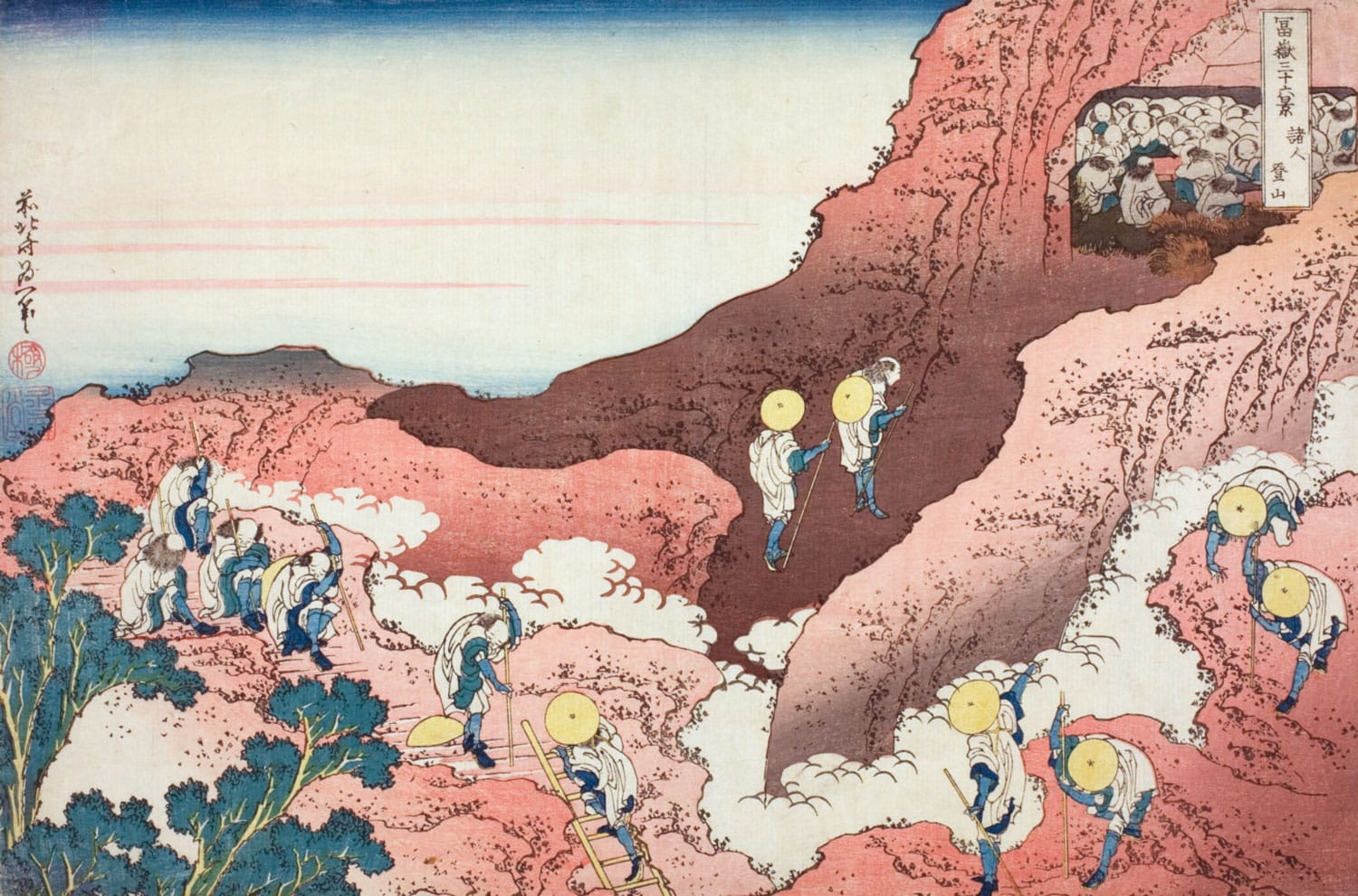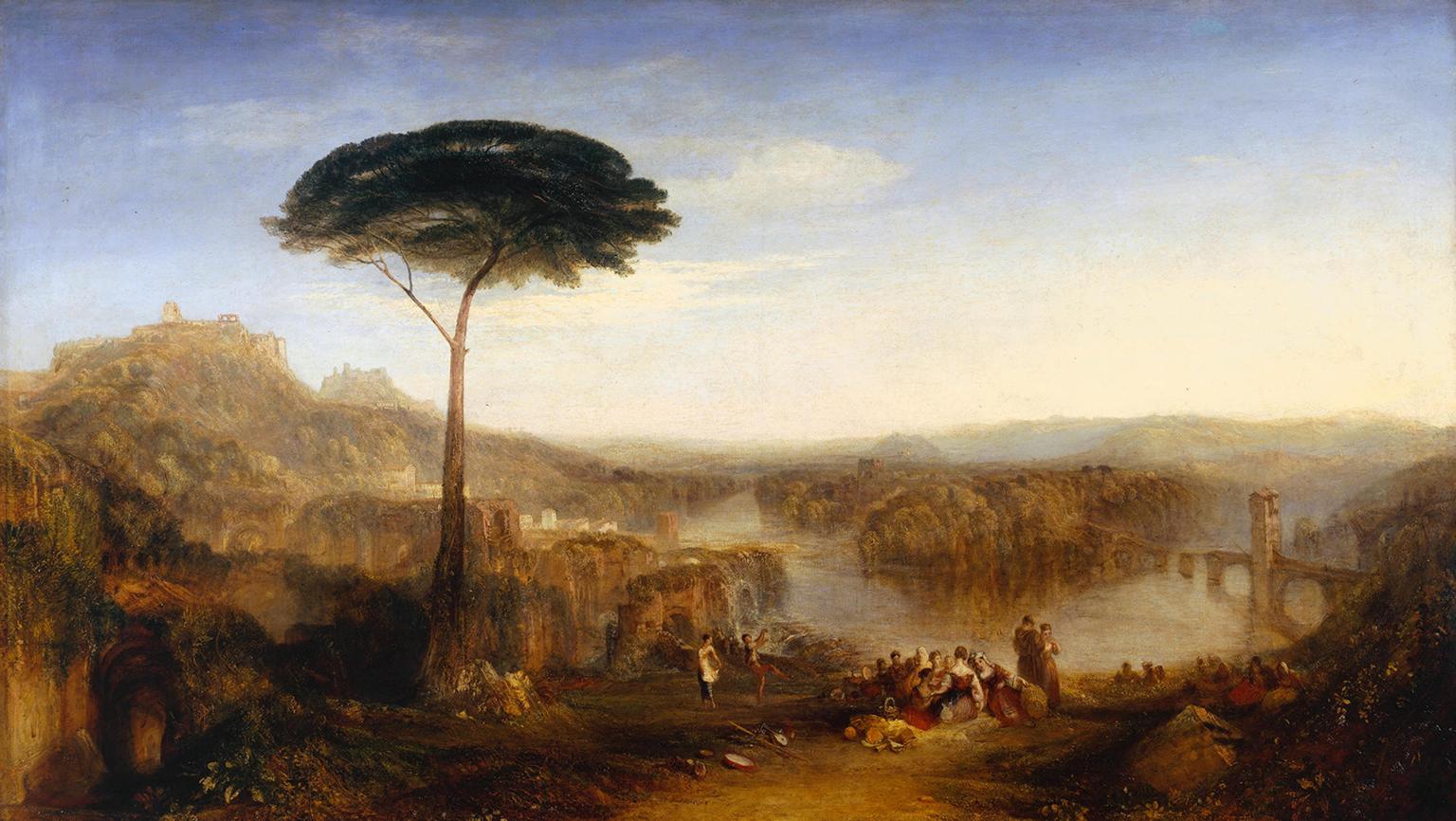
‘Pilgrimage’ is a musty, ancient word, conjuring images of wizened men hunched over staffs, roadside inns, Tibetan monks, knapsacks, and asceticism. Yet despite its religious origins and archaic connotations, the pilgrimage – which is so entrenched in the history of walking – is making a comeback.

JMW Turner, Childe Harold’s Pilgrimage – Italy. Accepted by the nation as part of the Turner Bequest 1856
“The walker toiling along a road toward some distant place is one of the most compelling and universal images of what it means to be human,” writes Rebecca Solnit in her book Wanderlust: A History of Walking.
It’s an image that has been adapted in literature and film repeatedly through the ages, from Cormac McCarthy’s The Road (2006), in which two pilgrims plod along a bleak and treacherous road to nowhere in post-apocalyptic America, to John Bunyan’s allegorical novel Pilgrim’s Progress (1678), which traces the journey of Christian as he walks from the City of Destruction to the Celestial City. In each case the road becomes a metaphor for life, emulating its unprecedented twists and turns and the lessons it carries along the way.
According to the National Trust, a pilgrimage is ‘a devotional practice consisting of a prolonged journey, often undertaken on foot towards a specific destination of significance.’
ArrayKatsushika Hokusai (Japanese, 1760-1849). Group of Mountain Climbers, from the series Thirty-six Views of Mount Fuji. Japan
Leaving everything behind – home, responsibilities, loved ones, material things – the pilgrim strikes out with a specific goal. But the goal isn’t all. The journey is tantamount to the destination, as the challenges encountered en route are often part of the transformative experience.
Some pilgrimages don’t even have a tangible destination or fixed end point. The Jain monks and nuns, for instance, lead a wandering lifestyle travelling from town to town on foot, never lingering long enough in one place to develop a bond.
Pilgrimage is present in almost all world religions. Run a Google search for the term and the first image you’ll likely see is of the Islamic Hajj. Like a pointillism painting, the picture captures some of the millions of people that make the annual pilgrimage to Mecca, Saudi Arabia. Dressed in white ihram (a symbol of equality), the pilgrims converge around the cube-shaped Ka’bah, the most sacred site in Islam and the direction of prayer for all Muslims.
ArrayMuslims praying at the Grand Mosque ahead of the annual hajj pilgrimage in Mecca, Saudi Arabia, on Tuesday. Photograph: Suhaib Salem/Reuters
As part of the many rites that take place during the Hajj, each pilgrim circumambulates seven times around the Ka’bah and walks back and forth between the sacred Safa and Marwa hills. For Muslims, pilgrimages are a religious obligation – a pillar of faith – and at least one Hajj must be taken in their lifetime (if they have the means to do so).
While pilgrimages aren’t compulsory in Christianity, Christians have been retracing the events of the Bible through visits to the Holy Land since the 2nd or 3rd century CE, and Christian pilgrimage sites are found across the world, from Lourdes in France to Mexico City.
In Tibet, devout Buddhists undertake a pilgrimage to the holy city of Lhasa prostrating themselves at every step of the journey in a slow worm dance, which can take months to complete and traverses some of the world’s harshest terrain.
In Hinduism, the River Ganges is sacred and Hindus believe its waters have the power to purify the soul and bring salvation (Moksha) from the cycle of life and death, hence why many pilgrimages end up at (and in) the river.
ArrayThomas Cole, The Pilgrim of the Cross at the End of His Journey (study for series, The Cross and the World), ca. 1846-1848, oil on canvas, Smithsonian American Art Museum
Britain was once a land of pilgrims. Through the Middle Ages, the shrine to the Virgin Mary in Walsingham, Norfolk, was among Europe’s most-visited pilgrimage destinations. But the tradition came to an abrupt end in 1538, when Henry VIII and Thomas Cromwell outlawed pilgrimages as part of their scheme to demolish the pre-Reformation church. It wasn’t until more than 300 years later that pilgrimages made a reappearance in England.
Today, pilgrimages are having a contemporary revival. Thirty pilgrimage routes have been created or reestablished in the UK in the last decade – a figure reported by the British Pilgrimage Trust, a charity committed to renewing pilgrimage in Britain.
According to them, pilgrimage in Britain today “should not attempt to imitate medieval forms of religious exclusivity. Instead, the tradition can be renewed to fit with modern needs.”

The pilgrimage of Santiago de Compostela
Top 10 lists on the web count down the world’s best pilgrimages, titled with secular appeals like ‘(and No, You Don’t Have to Be Religious)’. One magazine advertises them as spiritual paths offering “exercise, adventure and immersion in nature. Epiphany, optional”. Scenery is rated on its Instagram-friendliness. While this obviously isn’t an incentive that would have compelled pilgrims of yore, the open-to-all philosophy towards pilgrimages is getting more people out walking.
One of the most famous pilgrimage routes, the Camino de Santiago in northwest Spain, has seen a boom in popularity in recent years. In 1984, 423 pilgrims completed the final 100km stretch of the Camino. By 2006, the figure was 100,377 – and by 2016, it had exceeded 278,000. Of those, 6,000 were from the UK – a fourfold increase in a decade, according to the Guardian.
In the autumn of 2016, London-based photographer Ameena Rojee set out on a personal pilgrimage. For her, walking the Camino de Santiago was a way to connect to her Spanish roots.
“Spain is my mum’s country, and Galicia, the north-western region in which the pilgrimage ends, is her birthplace,” she tells whynow. “I wanted to better understand this place which makes up part of my heritage, and the Camino seemed a brilliant way to do that.”
ArrayThomas, Brian Dick Lauder; John Bunyan’s ‘The Pilgrim’s Progress’: ‘I Dreamed and Behold…’; National Trust, Mottistone Manor
She’d also just left her job. “It was a time of change. I’d just spent the last two years sat in an office, commuting almost two hours each way, not really investing any time into my passion (photography). I wanted to do something as an antidote to all that.”
Starting in Spain’s La Rioja region, Ameena traced the Camino Frances (the most well-trodden of the nine major Camino de Santiago routes) on foot for 23 days (550km), staying at albergues (pilgrim hostels) along the way. Her resulting project ‘El Camino’ captures the changing light and landscape – an arid plain beneath a Simpsons-like sky, where the camino intersects with another road like a giant horizontal cross; a black and white horse drinking from a trough in a misty field; a bird in mid-flight; and golden light filtering through trees like wildfire – as well as the encounters she had while walking.Although she was with a friend, Ameena says even if she’d been alone, there would have only been one instance where she was properly alone without anyone around. It was for this reason that she chose to return to Spain three years later, but this time she would do the pilgrimage alone. On the quieter Via de la Plata (the Silver Way), Ameena sometimes walked for hours without seeing another soul.
“I surprised myself that even on the most horrible days with shite weather and 25km+ walks, where I would’ve thought maybe having a companion to commiserate with might have been nice, I actually enjoyed myself more,” she recalls.
ArraySassetta (Stefano di Giovanni), The Journey of the Magi, ca. 1433–35
Journals she kept during the walk detail the long days, the exhaustion, the simple pleasures (a hot shower or blankets on colder nights), and the accomplishment of walking 1,000km.
“Walking for hours and hours has a way of freeing up your mind, allowing you to think more openly,” she says. “Every so often when the walk was simple enough that it was only about putting one foot in front of the other it became like a meditative state, and sometimes I found myself thinking of absolutely nothing – which was incredible since my mind is always so active!”
Ameena believes the resurgence of interest in pilgrimages is part of a larger movement, “one that focuses on happiness, wellbeing, and a slower pace of life.”
“I want to avoid using the term ‘self-care’, but I think that’s part of it too – just not the corporate, commercialised version of it,” she adds. “That’s all come into extremely sharp relief this year, and I predict that once we can go back safely, this pilgrimage and many others will see a huge rise in numbers.”

Two Pilgrims in an Open Landscape, David Teniers the Younger
Though the pilgrimage has strayed from its purely religious purpose, modern pilgrimages offer a respite from the sedentary world of desks and screens, and allow us to reconnect with the natural world. In fact, the Chinese phrase for going on a pilgrimage – ‘ch’ao-shan chin-hsiang’ – means paying one’s respects to the mountain, as if the mountain itself were a revered ancestor or deity.
Pilgrimage is, in many ways, walking in its most distilled form, one which puts us in touch with our true selves, where, guided by intention, will and strength, the mind, body and the land become one. As Gary Snyder once said to fellow Beat writer Jack Kerouac: “the closer you get to real matter, rock air fire wood, boy, the more spiritual the world is.”
To see Ameena Rojee’s photography, visit her website. You can also follow her most recent pilgrimage on the Camino de Santiago as she digitally retraces her steps each week here.




